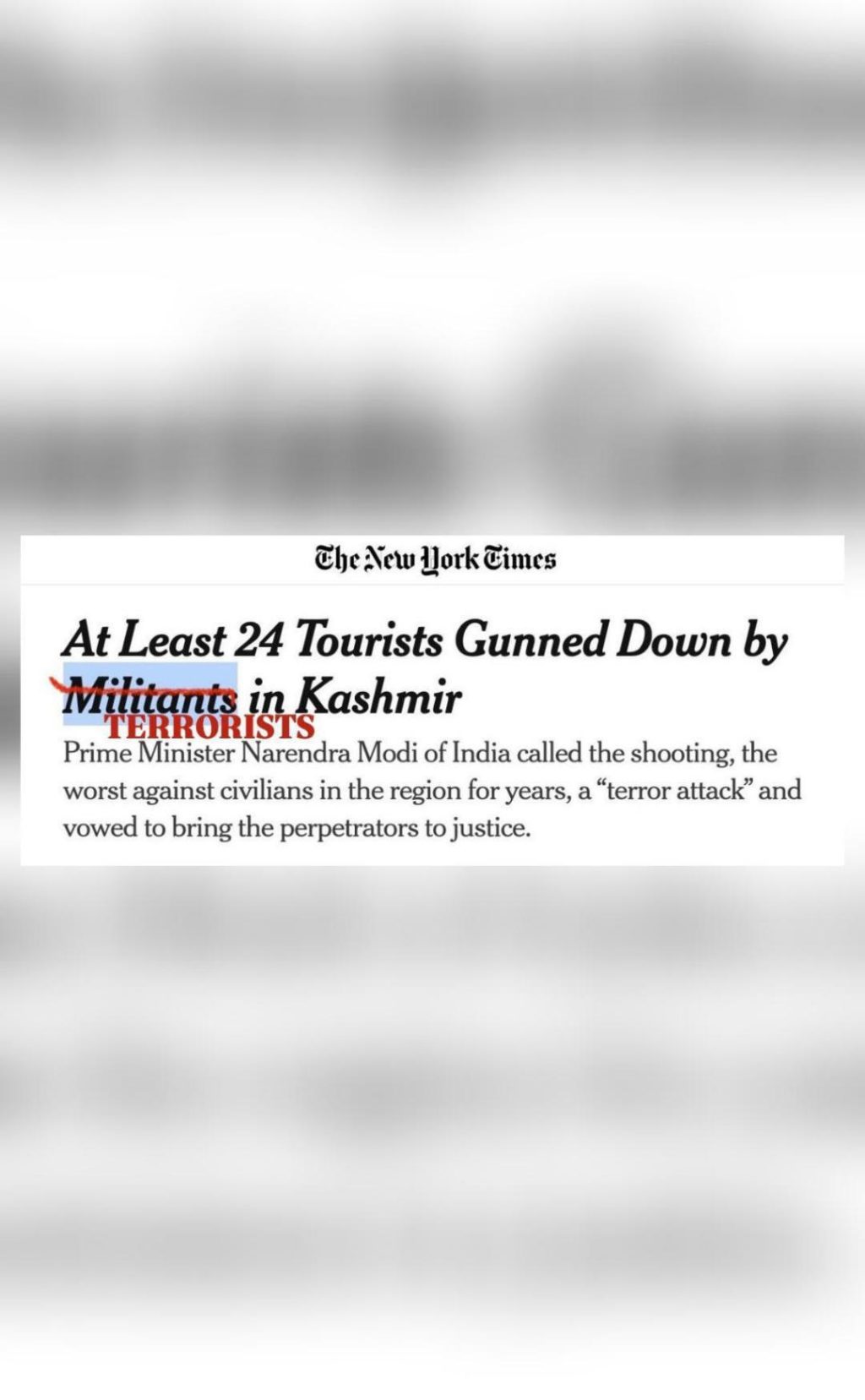
Hey NYT, Fixed it for You: US Committee After News Portal Calls J&K Terrorists ‘Militants’
The ongoing conflict in Jammu and Kashmir has been a subject of intense international scrutiny, with various news outlets attempting to provide an objective account of the situation. However, a recent tweet by the US House Committee on Foreign Affairs has sparked controversy, highlighting the perceived bias of one prominent news source – The New York Times.
The tweet in question appears to be a screenshot of a NYT article, which refers to the terrorists responsible for an attack in Pahalgam, Jammu and Kashmir, as “militants”. The tweet from the @HouseForeignGOP account reads, “Hey NYT, we fixed it for you…This was a TERRORIST ATTACK plain and simple…Whether it’s India or Israel, when it comes to TERRORISM, NYT is removed from reality” (1).
This incident has sparked a heated debate about the role of the media in reporting on international conflicts, particularly those involving terrorism. The US House Committee on Foreign Affairs’ tweet suggests that The New York Times’ terminology is inaccurate and could be seen as downplaying the severity of the attack.
The tweet has garnered significant attention on social media, with many users expressing their support for the committee’s stance. Some have argued that the use of the term “militant” instead of “terrorist” is a deliberate attempt to sanitize the actions of those responsible for the attack, thereby minimizing the gravity of the situation.
On the other hand, some have criticized the committee’s tweet, arguing that it is an attempt to silence critical voices and stifle debate. They argue that the term “militant” is a more nuanced term that acknowledges the complexity of the conflict in Jammu and Kashmir, rather than simply labeling those involved as “terrorists”.
The debate surrounding the terminology used to describe the conflict in Jammu and Kashmir is not new. In recent years, there has been a growing trend towards using more precise language to describe the actions of those involved in the conflict. This shift in language is often seen as an attempt to move away from the simplistic and often misleading binary opposition between “good” and “evil” that has characterized much of the reporting on the conflict in the past.
The New York Times’ decision to use the term “militant” in their article has been criticized by many as a prime example of this trend. The term “militant” is often seen as a euphemism for “terrorist”, and its use has been criticized for downplaying the severity of the attack.
However, others have argued that the term “militant” is a more accurate description of those involved in the conflict, as it acknowledges the political and ideological motivations behind their actions. This perspective is often supported by the fact that the conflict in Jammu and Kashmir is a complex and multifaceted issue, involving a range of political, social, and economic factors.
In conclusion, the tweet by the US House Committee on Foreign Affairs highlights the ongoing debate surrounding the terminology used to describe the conflict in Jammu and Kashmir. The controversy surrounding the use of the term “militant” instead of “terrorist” serves as a reminder of the importance of precise and accurate language in reporting on international conflicts.
The debate surrounding this issue is not limited to the US House Committee on Foreign Affairs and The New York Times. It is a reflection of the broader debate about the role of the media in reporting on international conflicts, and the need for more nuanced and accurate language to describe these complex issues.
As the world continues to grapple with the challenges posed by terrorism, it is essential that we engage in a more informed and nuanced discussion about the terminology used to describe these conflicts. By doing so, we can work towards a more accurate and comprehensive understanding of the issues involved, and strive towards a more peaceful and stable world.
Source:
(1) https://x.com/HouseForeignGOP/status/1914843415793095043



